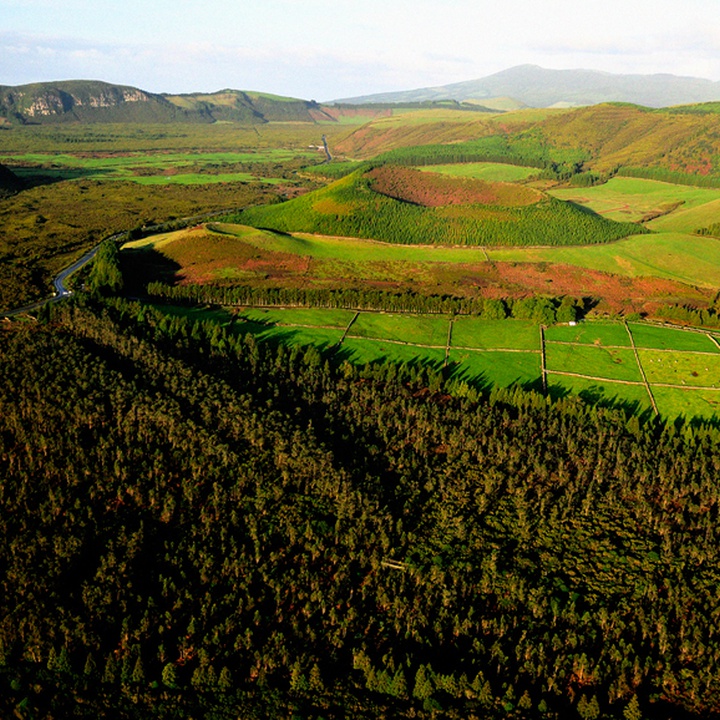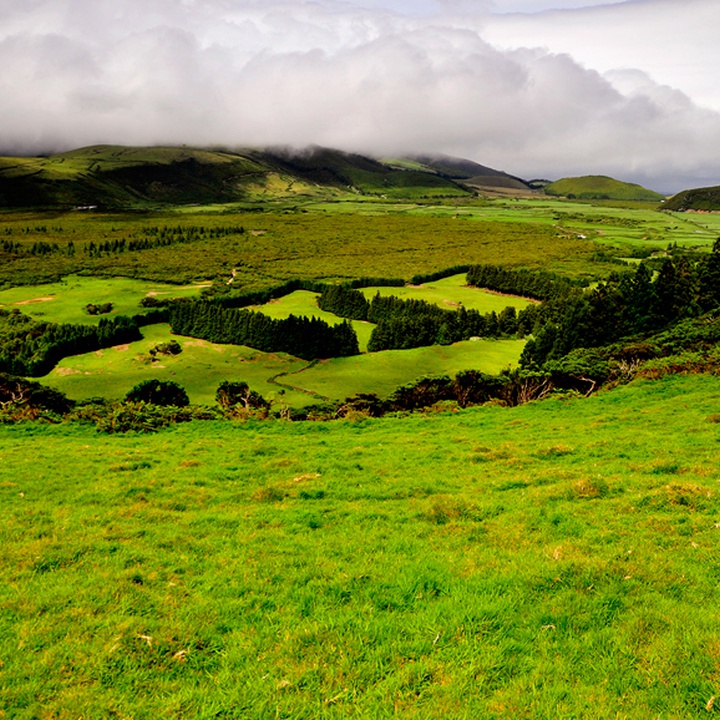Text size:
Caldeira de Guilherme Moniz
Protected Area of Resources Management
Located on the central zone of the island, this area occupies 1.218 hectares and has a maximum altitude of about 660 metres.
Here, it is possible to observe the coexistence of the natural landscape with the humanized landscape that resulted from the farming and cattle breeding activities, where the wild cattle, like the fighting bulls, finds its maximum exponent.
Caldeira de Guilherme Moniz, placed at the top of the central volcano with the same name, is a northwest-southeast elongated collapse caldera, with a maximum diameter of 4 kilometres and a minimum of 2.5 kilometres. Only its south edge is preserved, namely the Serra do Morião where thick lava flows and trachytic domes are exposed, sometimes with prismatic jointing. On the other hand, the north part of the caldera was altered by the installation of domes and coulées, more recent and associated with the Pico Alto Volcano.
This caldera’s interior, with a flattened bottom and partially covered by recent basaltic lava flows emitted from the Algar do Carvão volcanic system at about 2.000 years ago, includes an important perched aquifer, evidenced in the several water springs that occur in the outer slopes of the massif, which are example the Furna d' Água and the Furna do Cabrito, used for public water supply.
The Macaronesian woodlands and the Sphagnum spp. peatbogs ensure the refill of the aquifers that exist in the Guilherme Moniz Volcano, as evidenced by the water springs that exist in the “furnas” (volcanic caves) mentioned above and the ones that occur in the south flank of this volcano.
Of the existing species of endemic flora, stand out Tree Heath (Erica azorica), Azorean Laurel (Laurus azorica) and Azorean Blueberry (Vaccinium cylindraceum).
Regarding birds, stand out the Common Buzzard (Buteo buteo rothschildi), the Azores Woodpigeon (Columba palumbus azorica), the Azores Blackbird (Turdus merula azorensis), the European Robin (Erithacus rubecula), the Azores Chaffinch (Fringilla moreletti), the Eurasian Blackcap (Sylvia atricapilla atlantis) and the Azores Grey Wagtail (Motacilla cinerea patriciae).
Sometimes, the only mammal endemic to the Azores – the Nyctalus azoreum – can be observed here.
It is possible to cross several sectors of this protected area through the Passagem das Bestas walking trail (PRC07TER).
This caldera is classified as a geosite of the Azores UNESCO Global Geopark and the north end of this area belongs to a Special Area of Conservation (SAC) within the Natura 2000 network.




